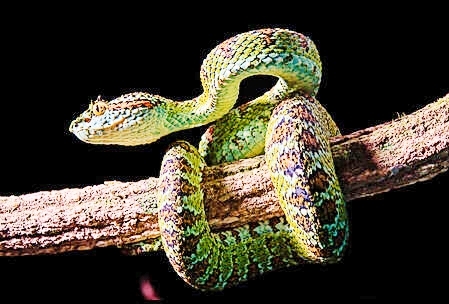|
| Query: Brown snake | Result: 207th of 285 | |
Blotched palm-pit viper (Bothriechis supraciliaris)
| Subject: | Blotched palm-pit viper (Bothriechis supraciliaris)
| | Poster: | Shahril (different_world_06@hotmail.com)
| |

| Resolution: 449x304
File Size: 88715 Bytes
Date: 2024:03:25 08:37:06
Upload Date: 2024:03:25 18:50:46
|
Blotched palm-pit vipers (Bothriechis supraciliaris) only inhabit a small region of Costa Rica. They’re usually moss green but can be reddish brown and only grow about 20 inches long. Their biggest threat is habitat loss, and researchers note a continuing decline in the number of adult snakes. |
^o^
Animal Pictures Archive for smart phones
^o^
|
|

